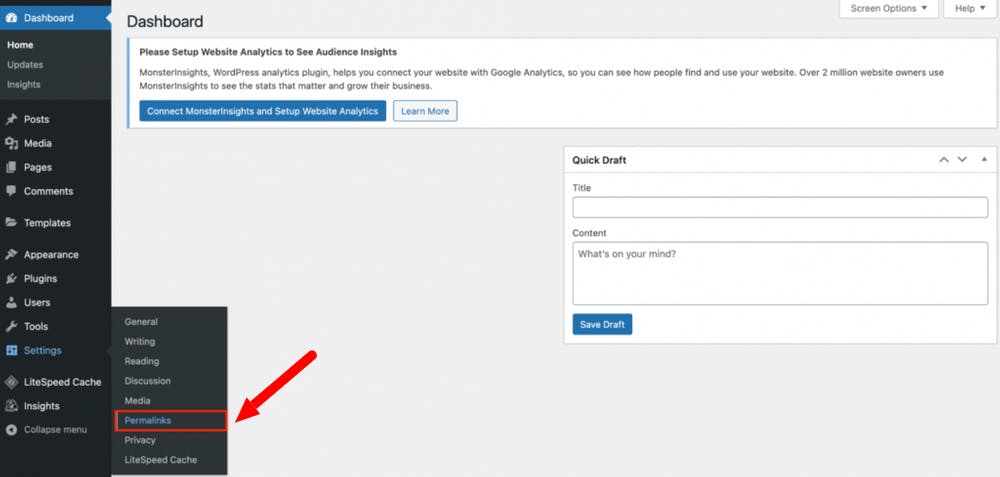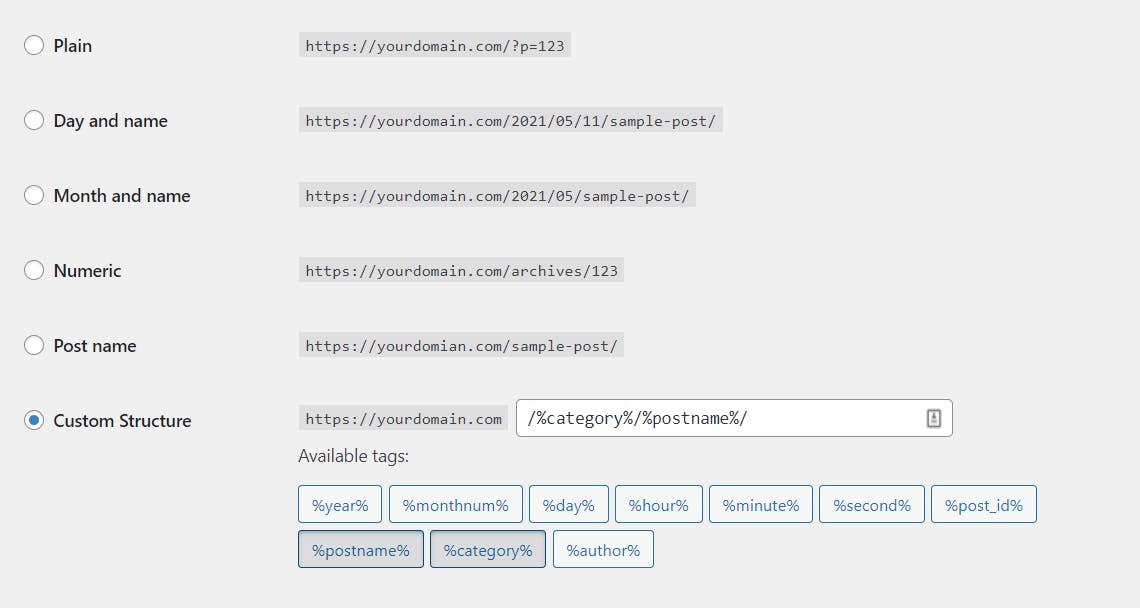A permalink is a link used on your site to access a particular piece of content.
For example, the homepage of my blog is at muthuannamalai.tech, and a single post uses a link like muthuannamalai.tech//wordpress-permalinks
Additionally, you can use permalinks for pages that are archived, static, or that need their own URL.
This post explains how permalinks work, how to customize and optimize them for SEO
What is a Permalink?
The term permalink refers to a 'permanent link' to a particular web page. As the link is 'permanent', it can't be changed, as doing so would mean breaking existing links to the corresponding page.
Most permalink URLs look something like this:
A permalink isn't just a way to direct users to a specific web page; it can also tell the user what the page is. This information can be found in the slug, which appears at the end of the URL.
In most cases, the permalink's slug contains the name of the post or page the permalink points to. Other instances may include a relevant category or date of publication.
How to set up a permalink on WordPress
In WordPress, you do not need to write permalinks because the platform will create them for you automatically. It is also possible to use WordPress plugins that allow you to change your permalink structure (be aware that to enable plugins on your WordPress, you will need a Business or eCommerce plan). The permalink structure on your WordPress site can affect your site's SEO performance, so it's best to choose your permalink structure thoughtfully and deliberately if you choose to customize it. Whenever possible, you should also set up your site's settings before you launch it; that way, the greatest SEO benefits can be realized
Customizing Permalinks in WordPress
Default permalinks on WordPress are not SEO-friendly. The post number is derived from the post table of your website's database, along with the URL structure:
Changing the permalink settings will allow you to have a custom permalink. To do this, follow these instructions:
- Log in to your WordPress dashboard.

- Click Permalinks under Settings in the sidebar menu

- Make sure you've enabled the %category% and %postname% tags under the Common Settings tab. You can also select other options based on the nature of your website.

- Click Save Changes when you are finished
- Instead of just displaying the archive number, now your permalinks display the category and post name
What Is the Importance of a Permalink?
When you blog or manage a website's content in general, you must include the permalink on your checklist. It does so because it negatively impacts the usability of your website. If the permalink is clean and readable, it has the highest likelihood of getting clicked over long or spammy ones.
Even just by looking at the permalink, readers can tell what the overall content is about. This also indicates that the content is trustworthy. Additionally, since the URL is permanent, it makes your content bookmarkable. Besides the basics of website structure, permalinks play an important role in search engine optimization (SEO).
An easy-to-navigate site architecture that includes a natural page hierarchy will help users and search engines navigate the site. In addition, URLs are an important ranking factor for Google. Search engines will be more likely to rank your content highly if your permalinks are structured correctly.
SEO Best Practices For Permalinks
Here are some permalink SEO best practices to follow when writing the slug of a URL:
- Make it relevant to the content of the page or post.
- Ensure it is concise and memorable.
- Consider incorporating SEO keywords or phrases related to the post or page that people usually search for.
- Separate the words with hyphens if the slug contains more than one. For example, /what-is-a-permalink/.
- It is best to avoid stop words, such as "the," "a," "but," "is," "and," "my," "your."
Conclusion
- The permalink is a fixed URL linked to a specific web page or post. When search engines crawl your site, they will read the URL of each page. Visitors will also look at the URL to see if the information is accurate and useful.
- Thus, permalinks should be user-friendly and SEO-friendly. Due to its permanence, it should not be changed carelessly. When you have to make changes to a permalink, set 301 redirects to prevent issues.
- Your site's traffic and search engine ranking will increase if you implement proper permalink practices.
You can now extend your support by buying me a Coffee.😊👇
If you want to contact me you can do it here:
Thanks for Reading 😊

